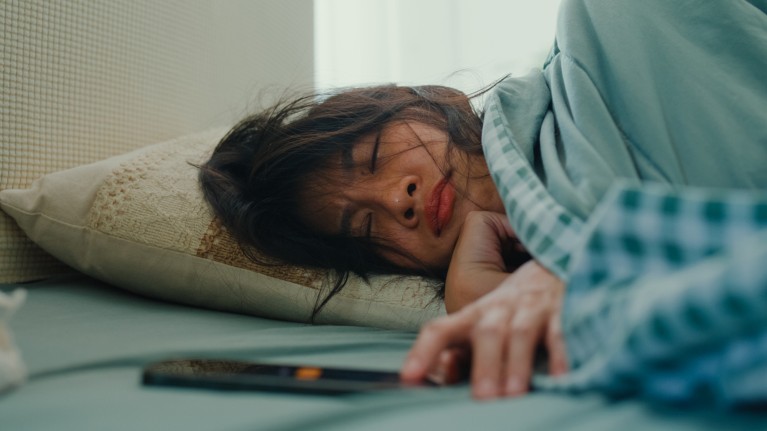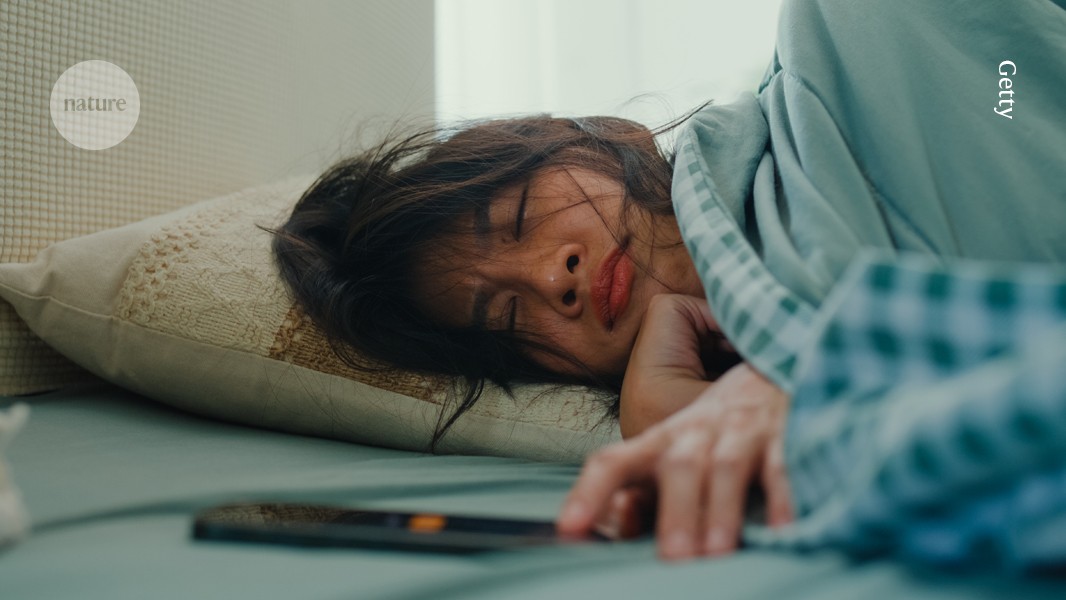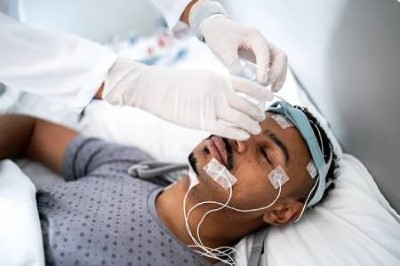
Electrical activity in the brain during awakening is linked with subsequent levels of grogginess.Credit: Getty
How does your brain wake up from sleep? A study of more than 1,000 arousals from slumber has revealed precisely how the brain bestirs itself during the transition to alertness1 — a finding that might help to manage sleep inertia, the grogginess that many people feel when hitting the snooze button.
Recordings of people as they woke from the dream-laden phase of sleep showed that the first brain regions to rouse are those associated with executive function and decision-making, located at the front of the head. A wave of wakefulness then spreads to the back, ending with an area associated with vision.
The findings could change how we think of waking up, says Rachel Rowe, a neuroscientist at the University of Colorado Boulder, who was not involved with the work. The results emphasize that “falling asleep and waking up aren’t simply reverse processes, but really waking up is this ordered wave of activation that moves from the front to the back of the brain”, whereas falling asleep seems to be less linear and more gradual.
The study was published today in Current Biology.
Sleeping-brain signature
The wide-awake brain shows a characteristic pattern of electrical activity, recorded by sensors on the scalp — it looks like a jagged line made up of small, tightly packed peaks and valleys. Although the pattern looks similar during rapid eye movement (REM) sleep, when vivid dreams occur, this stage features a lack of skeletal-muscle movement. The peaks are taller during most stages of non-REM sleep, which ranges from light to very deep slumber.
Deep asleep? You can still follow simple commands, study finds
Scientists already knew that the ‘awakened’ signature occurs at different times in different brain regions, but common imaging techniques did not allow these patterns to be explored on a precise timescale.
To refine the understanding of awakening, Francesca Siclari, a neuroscientist at the Netherlands Institute for Neuroscience in Amsterdam, and her colleagues studied 20 people as they woke from sleep. Each participant’s brain activity was recorded using 256 sensors on their scalps. Some awakenings were spontaneous; in other cases, participants were jolted awake by an alarm.



